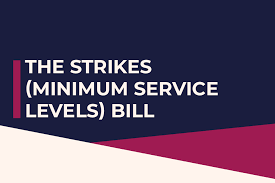Employment Discrimination and Harassment Laws under Employment Law
🔹 Employment Discrimination – Meaning
Employment discrimination occurs when an employee or job applicant is treated unfairly in any aspect of employment based on protected characteristics such as:
Race, caste, religion, or color
Gender or sex
Age
Disability
Sexual orientation or gender identity
National origin
Pregnancy
Forms of discrimination:
Unequal pay or promotion opportunities
Unfair recruitment or termination
Denial of benefits
Hostile work environment
🔹 Harassment – Meaning
Workplace harassment is a form of discrimination and includes any unwelcome behavior that creates a hostile, intimidating, or offensive work environment.
Sexual harassment: Unwelcome sexual advances, requests for favors, or offensive conduct.
Bullying or intimidation: Threats, verbal abuse, or offensive jokes based on protected characteristics.
Psychological harassment: Creating undue stress, humiliation, or isolation at work.
🔹 Legal Framework
1. Indian Law
a) Constitution of India:
Article 14: Right to equality
Article 15: Prohibition of discrimination on religion, race, caste, sex, or place of birth
Article 21: Right to life and personal dignity
b) Statutory Laws:
The Sexual Harassment of Women at Workplace (Prevention, Prohibition and Redressal) Act, 2013
Defines sexual harassment broadly.
Requires Internal Complaints Committee (ICC) for complaints.
Provides remedies including termination, warning, or monetary compensation.
The Equal Remuneration Act, 1976
Prohibits gender-based discrimination in wages for the same work or work of similar nature.
The Rights of Persons with Disabilities Act, 2016
Prevents discrimination against employees with disabilities.
Labour Codes & Industrial Laws
Ensure fair employment practices, anti-discrimination measures, and grievance mechanisms.
2. United States Law
Title VII of Civil Rights Act, 1964: Prohibits discrimination based on race, color, religion, sex, and national origin.
Age Discrimination in Employment Act (ADEA), 1967: Protects employees over 40 from age-based discrimination.
Americans with Disabilities Act (ADA), 1990: Prohibits disability discrimination.
Equal Pay Act, 1963: Ensures equal pay for equal work regardless of sex.
Harassment: Considered a form of discrimination under Title VII.
3. United Kingdom Law
Equality Act 2010: Protects employees from discrimination, harassment, and victimization on protected characteristics including age, gender, race, disability, religion, sexual orientation, and gender reassignment.
🔹 Legal Implications for Employers
Policy Implementation
Must have anti-discrimination and anti-harassment policies.
Training programs for employees and managers.
Complaint Mechanisms
Internal grievance redressal procedures are mandatory (especially for sexual harassment under Indian law).
Liability
Employers can be held liable for discriminatory practices or harassment even if committed by supervisors or coworkers.
Remedies for Employees
Compensation for lost wages, emotional distress, reinstatement, or punitive damages.
🔹 Key Case Law
India
Vishaka v. State of Rajasthan (1997)
Landmark case that laid down guidelines for preventing sexual harassment at the workplace before the 2013 Act.
Emphasized employers’ duty to provide a safe working environment for women.
Medha Kotwal Lele v. Union of India (2003)
Affirmed the Vishaka Guidelines and highlighted the importance of complaint committees.
Bangalore Metropolitan Transport Corporation v. Shobha Rani (1999)
Supreme Court reinforced that discrimination based on gender or caste in employment violates constitutional rights.
United States
Meritor Savings Bank v. Vinson (1986)
Established that sexual harassment creating a hostile work environment violates Title VII.
Price Waterhouse v. Hopkins (1989)
Gender stereotyping is a form of sex discrimination.
Bostock v. Clayton County (2020)
Discrimination based on sexual orientation or gender identity is prohibited under Title VII.
United Kingdom
X v. Y [Employment Tribunal, 2004]
Harassment based on sexual orientation is unlawful and employees are entitled to compensation.
Royal Mail Group Ltd v. Jhuti (2019)
Employer liable for harassment and indirect discrimination due to unfair treatment of an employee.
🔹 Practical Significance
For Employers: Need proactive policies, training, and grievance mechanisms to avoid liability.
For Employees: Right to a safe, non-discriminatory workplace, with legal remedies for violations.
For Courts: Focus on protecting dignity, equality, and fair treatment in employment.
✅ Summary: Employment discrimination and harassment laws ensure that all employees have equal opportunities, safe workplaces, and protection from unfair treatment. Courts globally enforce constitutional, statutory, and common law provisions to prevent and remedy discriminatory practices.









0 comments